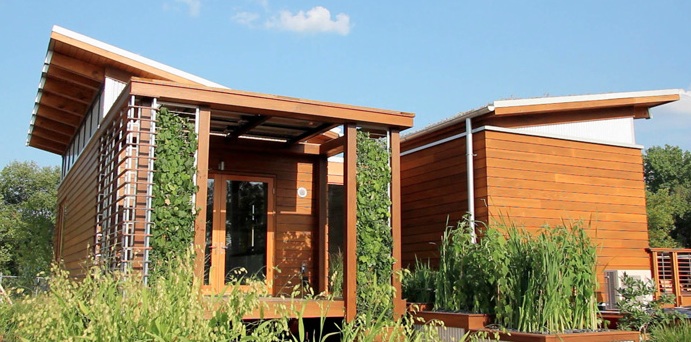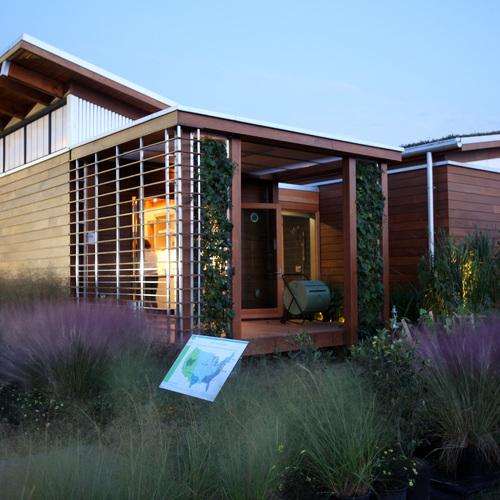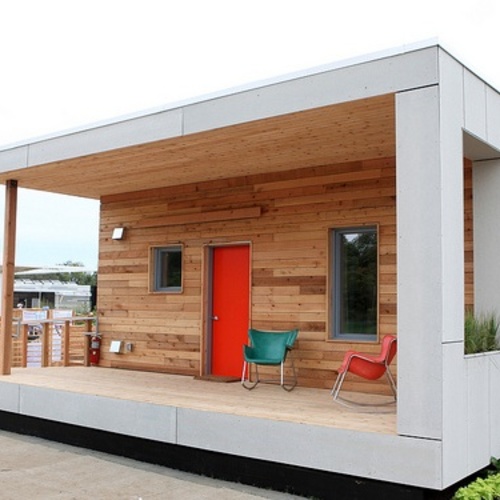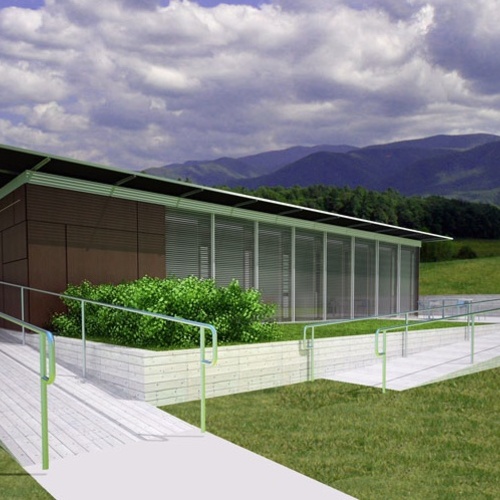
Image Credit: University of Maryland
Last summer, as the 2011 Solar Decathlon team representing University of Maryland toiled away at its contest entry, a 920-sq.-ft. one-bedroom consisting of two “shed” modules arranged in a staggered, split-butterfly configuration, the hope was that the building would eventually be sold to a couple whose annual income was in the $75,000-to-$115,000 range.
The house, known as WaterShed, has since acquired high-tech celebrity as the overall winner of the Decathlon and very recently attracted a buyer, energy company Pepco, whose annual income falls well above the recommended range.
As University of Maryland announced this week, WaterShed will be moved to one of Pepco’s facilities in Maryland’s Montgomery County, where it will serve as both an educational showcase and research tool. The university will partner with the utility on the building’s operation and help monitor its performance.
A living laboratory
In its “Where We Live” blog, the Washington Post noted that the home sold for $200,000. The purchase agreement calls for assistance from the WaterShed team in transporting the house to the Montgomery County site, although Pepco will pay disassembly, transport, reassembly, and site costs. Team members also will serve as docents at the house once it opens for public display.
The house features 2×10 solid and 9.25-in. engineered wood for the floor framing, 1-1/8-in. tongue-and-groove Avantech floor sheathing, and 6 in. of Demilec Heatlok Soy closed-cell spray foam, bringing the system to R-39. Exterior walls are built with a hybrid system of standard stick framing and heavy timber framing, two layers of 2-in. extruded polystyrene over 2×6 tongue-and-groove sheathing, and 5.5 in. of Demilec Sealection in the stud bays, bringing the entire wall system to R-44.5. The roofs for both modules are insulated with 3.5 in. of Demilec Heatlok Soy and 4 in. of polyisocyanurate on the exterior, bringing them to R-57.26. Thermo-treated wood is used for the siding and decking.
Once the Solar Decathlon began last fall in Washington, WaterShed led the competition most of the way, scoring more than 90 points out of a possible 100 in eight of the contest’s 10 competition categories.
Weekly Newsletter
Get building science and energy efficiency advice, plus special offers, in your inbox.















2 Comments
Some for a multitude of
Some for a multitude of reasons would think other than energy use that this home design is horrendous.
I do like experimenting and contests and moving toward net plus. This particular design, well am at a loss for words.
Improved contest rules needed I think.
Cost, CO2, ability to remodel, fits with nature and life, locally sourced, jobs created...
It is a foam home show house.
It is a foam home show house. I wonder why any wood was even used? The Sprayfoam Association should have bought it.
Log in or create an account to post a comment.
Sign up Log in